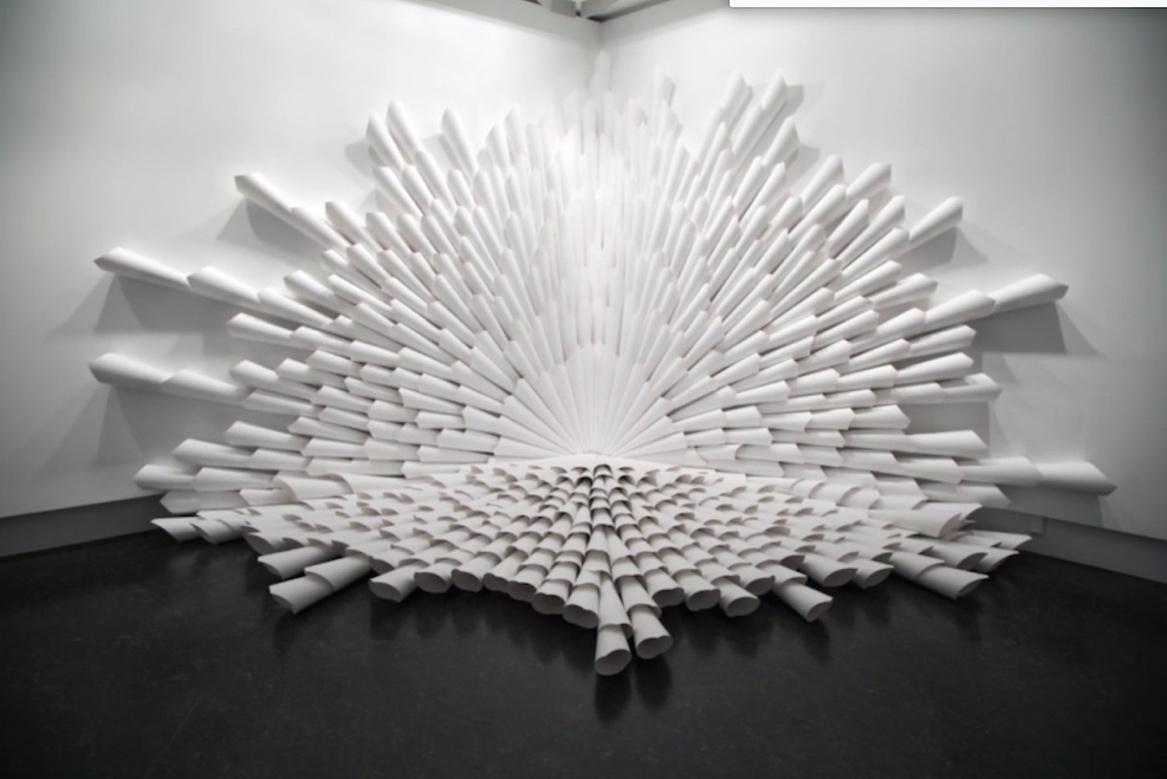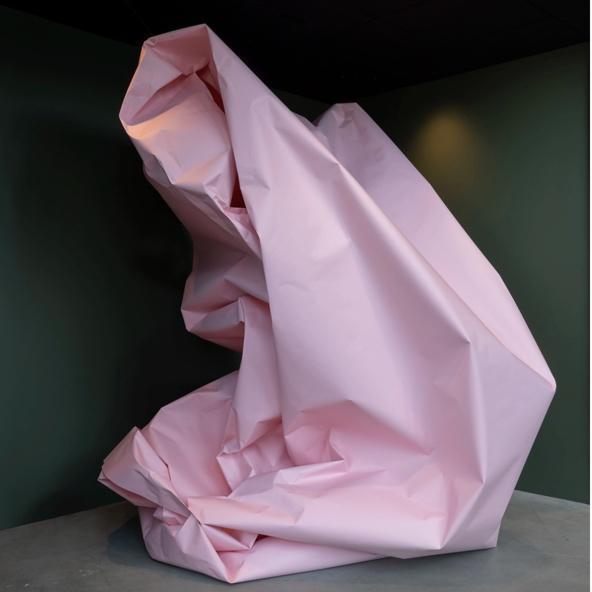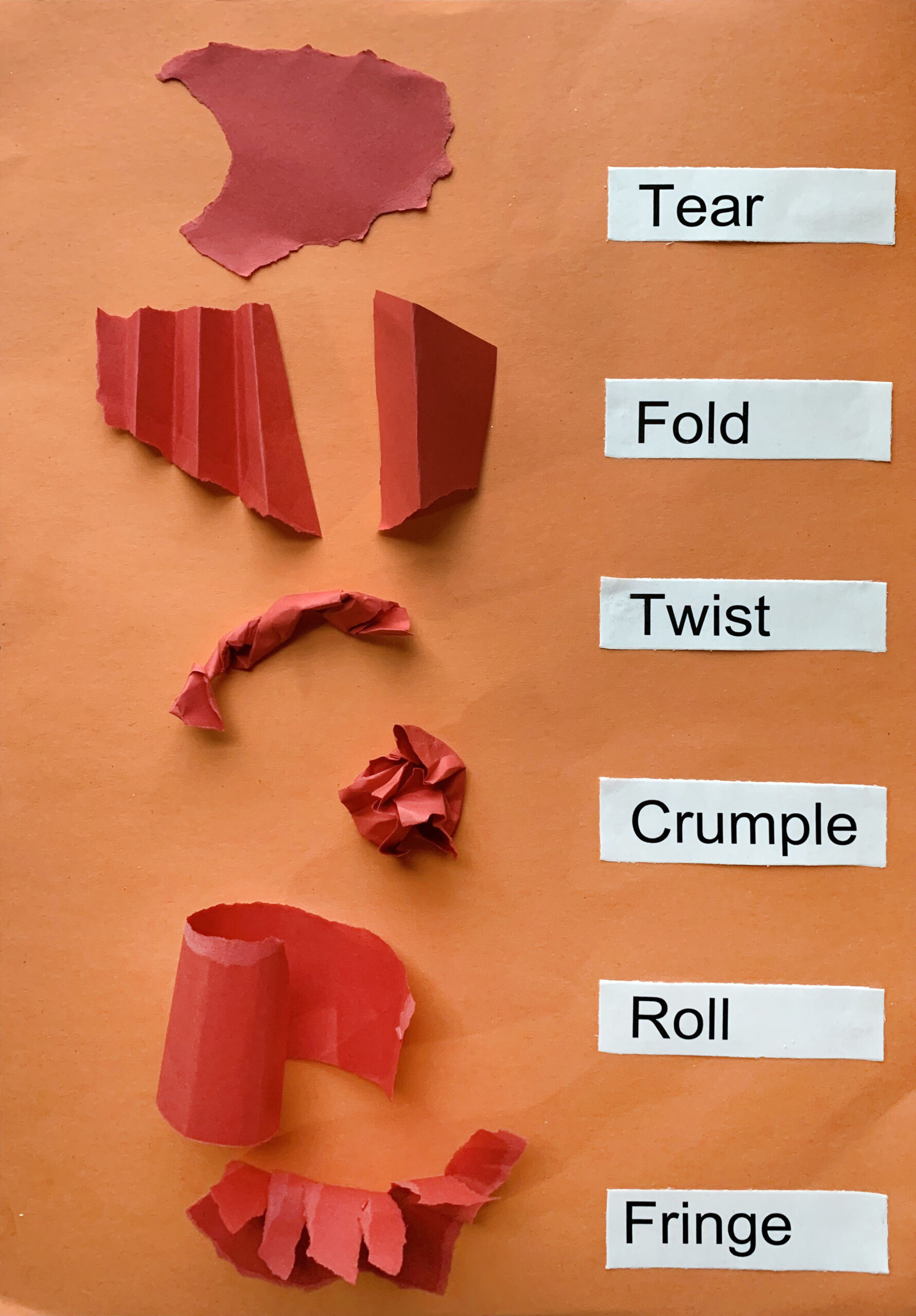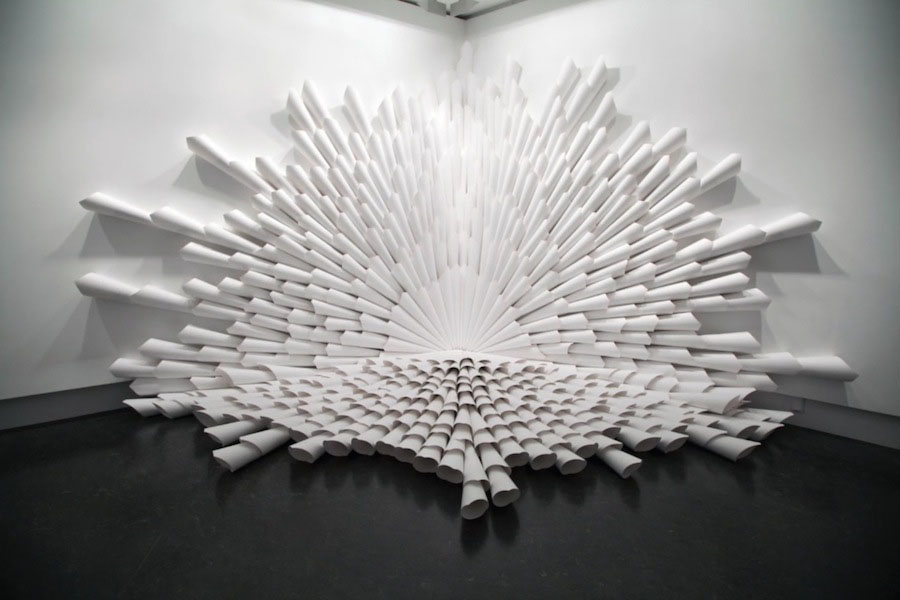Overview
Students will reflect on their art making using close-looking, speaking, writing, and/or sketchbook prompts.
Materials and Tools
- Pencil
- Sketchbook or one to two pieces of paper
- One piece of paper to make new shapes
- Relief sculpture from the previous lesson
Activities
Note: The following activities are written with sample language you may use with your students. Following the art-making lesson, you may choose as many reflection activities as desired for students to work on in class or independently.
Step 1: Close Looking: Marit Roland (10-15 minutes)
Hello, artists! Today we are going to continue exploring relief sculpture. Let’s look at two artworks by Marit Roland to begin.
Note to Teachers: Before teaching with a work of art, spend some time looking closely at it on your own. Familiarizing yourself with the artwork will prepare you to
guide the close-looking activity.
If your students are new to looking at art together, you can introduce the activity to students in the following way:
Today we are going to spend some time looking at and discussing a work of art together. When we look at art, there are no right or wrong answers. I’m going to ask you to look closely, share your ideas about what you see, and listen respectfully to each other’s ideas. Everyone’s ideas are important. We all see things differently, and when we look at art, we can learn to see through each other’s eyes.



Look closely at these two sculptures by Marit Roland.
- What words would you use to describe each artwork?
- How are these sculptures the same? How are they different?
- How do you think the artist changed the paper?
- What do you notice about how the sculptures are arranged in the spaces they
are in?
Activity 2: Close Looking at Student Work (10 minutes)
Take a close look at your relief sculpture.
- How many ways did you change your paper?
Think about the action you used to make each shape.
- What does that action sound like?
Come up with a sound for each shape.
Activity 3: Writing Activity: (10 minutes)
Now we are going to write about our artwork. Think about the action that you used to change the paper to make each shape in your sculpture. Practice each movement with your hands or body.
Based on your students’ writing skills, choose from the options below:
Option 1: Write a sentence to describe each action. What part of your hand or fingers did you use?
For example:
I used my fingers and turned my hands in opposite directions to twist the paper.
I used my whole hand and made a fist to crumple the paper.
Option 2: Use the sentence frames below to write two sentences about your artwork.
I used my ________ and ________ to tear the paper.
I used my _______ and ________ to roll the paper.
I used my ________ and ________ to fold the paper.
I used my ________ and ________ to crumple the paper.
I used my ________ and _______ to twist the paper.
Option 3: Label your relief sculpture using the vocabulary words above.
Activity 4: Sketchbook Activity (10-15 minutes)
You have looked closely at the shapes in your sculpture and thought about the actions you used to make each one. Now we’re going to make two new shapes and look closely by drawing them.
Tear two new pieces of paper. Think about your favorite ways to change paper and use those actions to change each piece. Then, make a drawing of each one.
Model changing one of your pieces of paper and drawing the overall shape and the lines of folds and curves. As you draw, you could say: I’m going to start by drawing the shape of my paper. How can I draw the folds (or curves)? What kind of lines do you see? Take suggestions from students.
Now it’s your turn.
- How will you change your shapes?
- How will you draw them?
After students finish their drawings, ask:
- How did you make your shapes?
- How did you draw them?
Resources

Making Paper Three-Dimensional
Marit Roland, Paper Drawing #14. 2015, SKMU Sørlandets Kunstmuseum, Kristiansand: https://maritroland.wordpress.com/paper-drawing-14/
Explore the sculptures Hill and Valley by Steven Siegel: http://www.sculptureinthewild.com/steven-siegel.html

